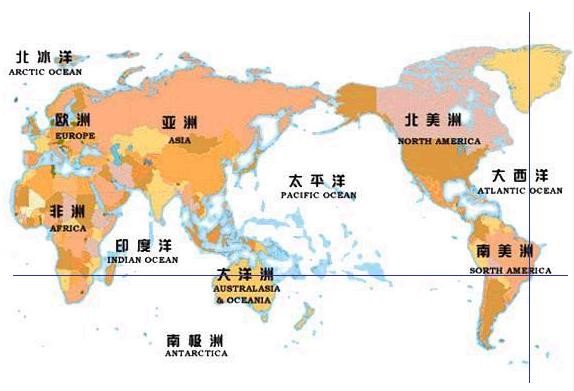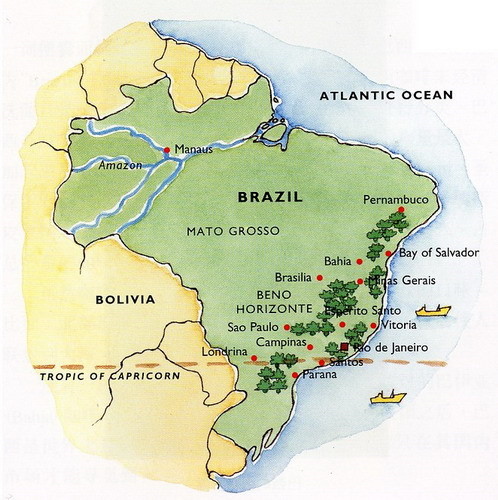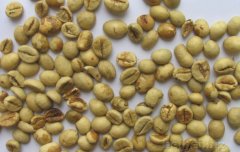Brazilian Bourbon Santos Coffee Bourbon Indian Arabica Coffee Tree
Brazilian Bourbon Santos Coffee


Flavor and taste characteristics: a variety of flavors, low acidity, taste lubrication.
Brazil is a rich and beautiful land, with the Atlantic Ocean in the east, more than 7400 meters of coastline and the famous Andes in the west. Brazil is also the world's largest coffee producer, known as the "coffee country". Brazil is vividly compared to the "giant" and "monarch" of the coffee world.
Brazilian coffee was introduced from French Guiana in 1729. Coffee was originally grown in the north, but the coffee trees did not grow well until 1774, when a Belgian missionary planted coffee in Rio, a warmer and wetter climate in southern Brazil. So far, Rio is also one of the important producers of Brazilian coffee. Brazil grows many kinds of coffee, most of which are not of high quality, but there are also some world-famous products, Bourbon Santos is one of them. This seemingly complicated name sums up the history of this coffee.
The "bourbon" in Bourbon Santos, Brazil comes from the Bourbon Indian Arabica Coffee Tree. The island of Bourbon, now known as Reunion, was once a thriving place for Arabica coffee. Arabik coffee trees grown on the island were introduced around the world, and Brazil's Bourbon Santos is their descendant. Sandoz comes from the port of Sandoz, a port in the Atlantic Ocean in southeastern Brazil. Among the coffee exported from the port of Santos, there are Brazilian coffee from different producing areas, and the more guaranteed quality comes from the southern states of Sao Paulo, Parana and Minas Gerais, of which Minas Gerais has the best quality.
In Brazil, because the planting area of coffee is too large and the degree of mechanized production is relatively high, people often harvest ripe and green fruits together, and there is usually no sorting process. Sometimes coffee fruit is mixed with coffee branches and leaves. Not only that, Brazilian coffee beans are sun-dried, and farmers put coffee beans of different maturity together and expose them in the sun, so that the beans are mixed with soil and various impurities in the first place. sometimes overripe and rotten coffee fruits can also affect the flavor of coffee beans.
For Brazilian Bourbon Santos Coffee, there are no outstanding advantages, but there are no obvious shortcomings. This coffee has a mild and smooth taste, low acidity, moderate mellow and a hint of sweetness. These flavors are mixed together, and if you want to distinguish them one by one, it is the best test for the taste buds, which is why many Bourbon Santos fans love this kind of coffee. Because it is so mild and ordinary, Bourbon Santos is not suitable for the most common baking and the most popular brewing method. At the same time, it is also the best raw material for making Italian espresso and all kinds of fancy coffee. Bourbon Santos coffee can form a golden foam on the surface of espresso and give the coffee a slightly sweet taste.
Among the Brazilian coffee, Sandoz coffee is the most valued and famous one. It is like a friend who is low-key in appearance, indifferent in appearance, passionate in heart and full of wisdom. It may not bring you a strong feeling, but it seems to be by your side when you need it.
Important Notice :
前街咖啡 FrontStreet Coffee has moved to new addredd:
FrontStreet Coffee Address: 315,Donghua East Road,GuangZhou
Tel:020 38364473
- Prev

North Sumatra A.P. Robusta coffee raw beans
North Sumatra A.P. North Sumantra A.P. Robusta Grade 3 North Sumatra is located in northern Sumatra, the fifth largest island in the world, facing the Indian Ocean to the west, the Strait of Malacca to the east, Aceh to the north, and West Sumatra to the south, with a population of about 11.3 million. Its unique geographical conditions give birth to exuberant animal and plant ecology and abundance.
- Next

Classic Starbucks Coffee: cappuccino Cappuccino
Cappuccino Cappuccino coffee follows the traditional technique, which is made by our skilled coffee bartender who gently pours hand-made hot milk and delicate milk bubbles on top of espresso. In Italy, cappuccino is usually regarded as a breakfast drink, while espresso is considered suitable for drinking at any time of the day. Cappuccino contains less milk than latte
Related
- Beginners will see the "Coffee pull flower" guide!
- What is the difference between ice blog purified milk and ordinary milk coffee?
- Why is the Philippines the largest producer of crops in Liberia?
- For coffee extraction, should the fine powder be retained?
- How does extracted espresso fill pressed powder? How much strength does it take to press the powder?
- How to make jasmine cold extract coffee? Is the jasmine + latte good?
- Will this little toy really make the coffee taste better? How does Lily Drip affect coffee extraction?
- Will the action of slapping the filter cup also affect coffee extraction?
- What's the difference between powder-to-water ratio and powder-to-liquid ratio?
- What is the Ethiopian local species? What does it have to do with Heirloom native species?

